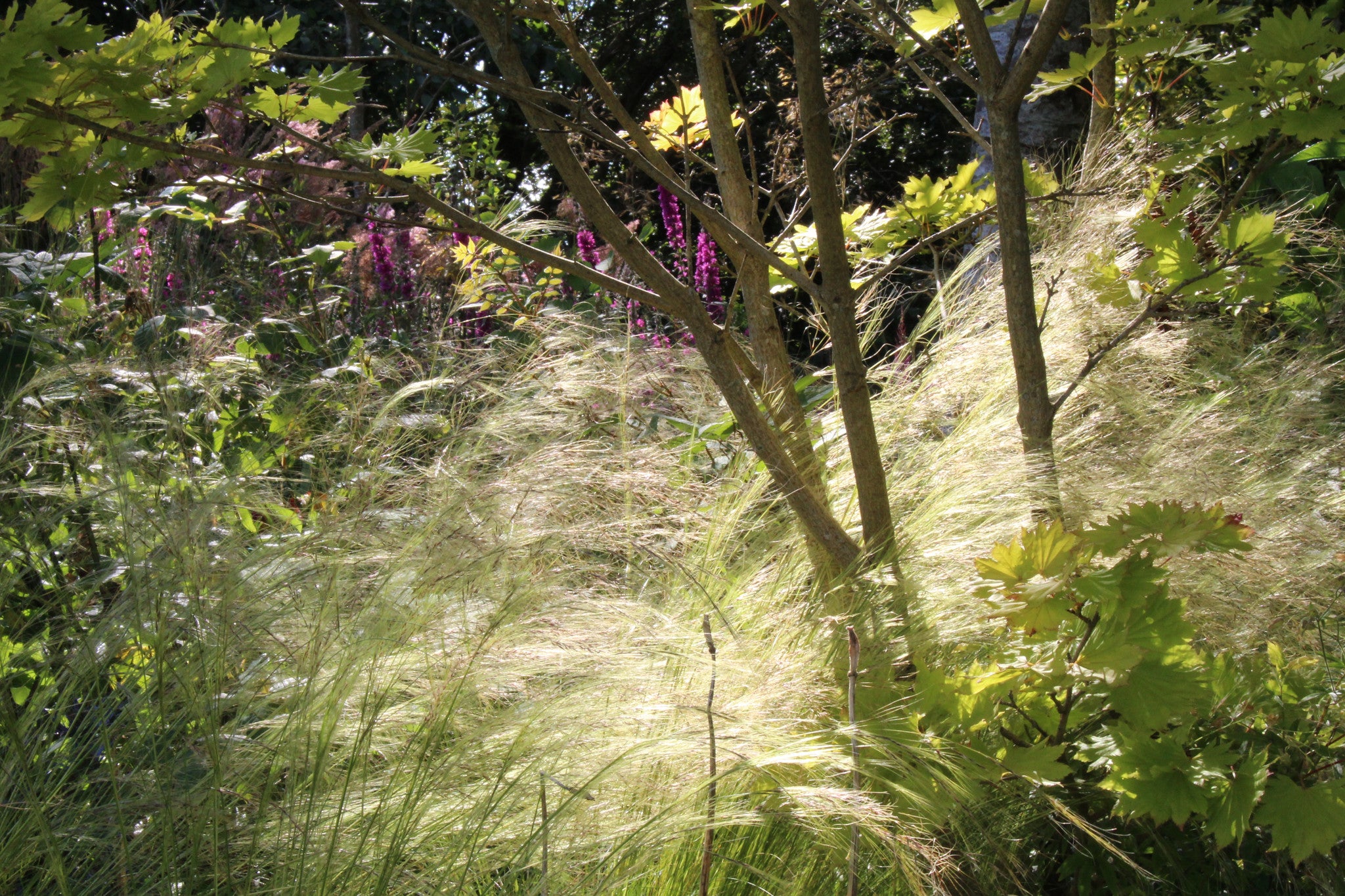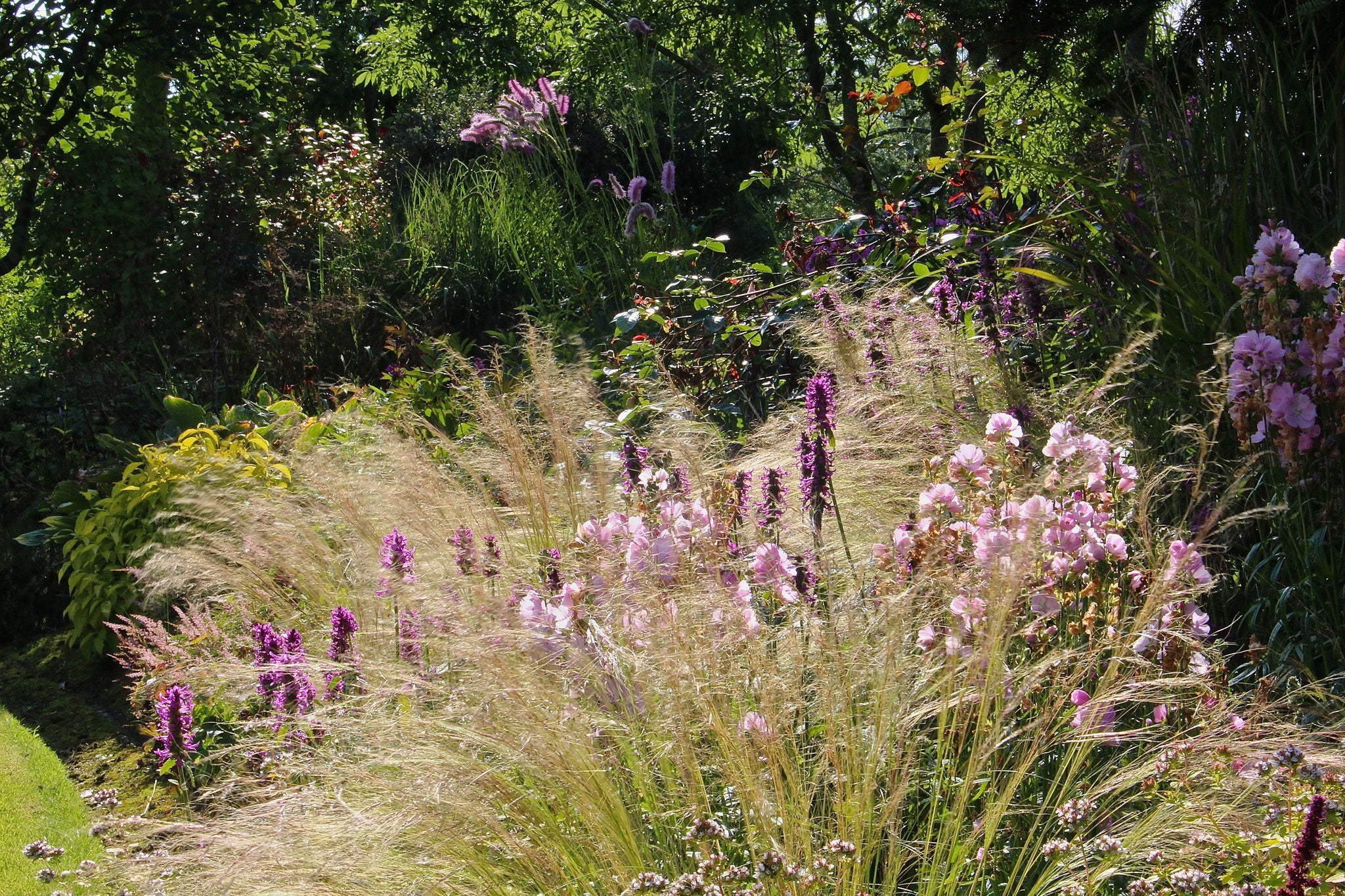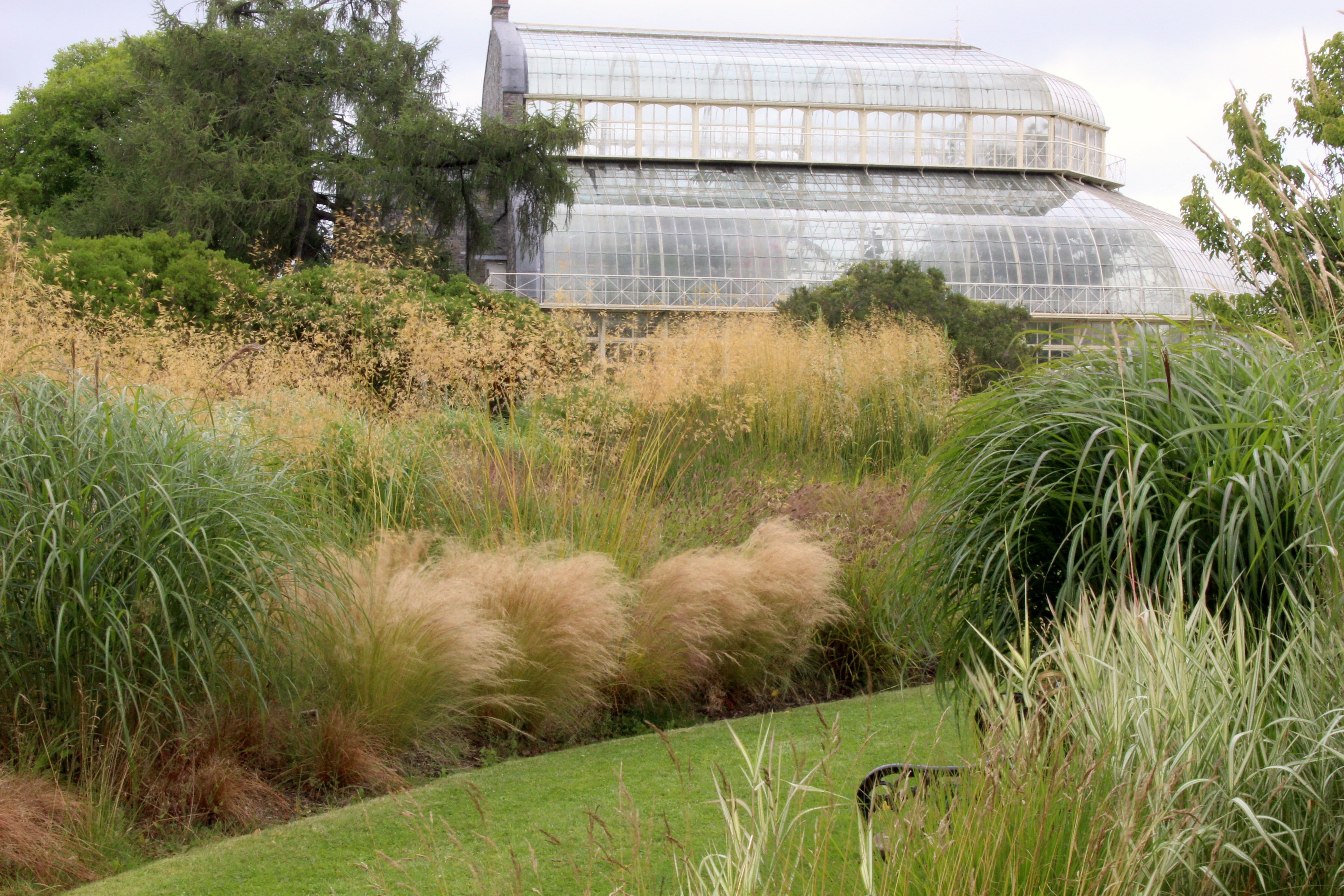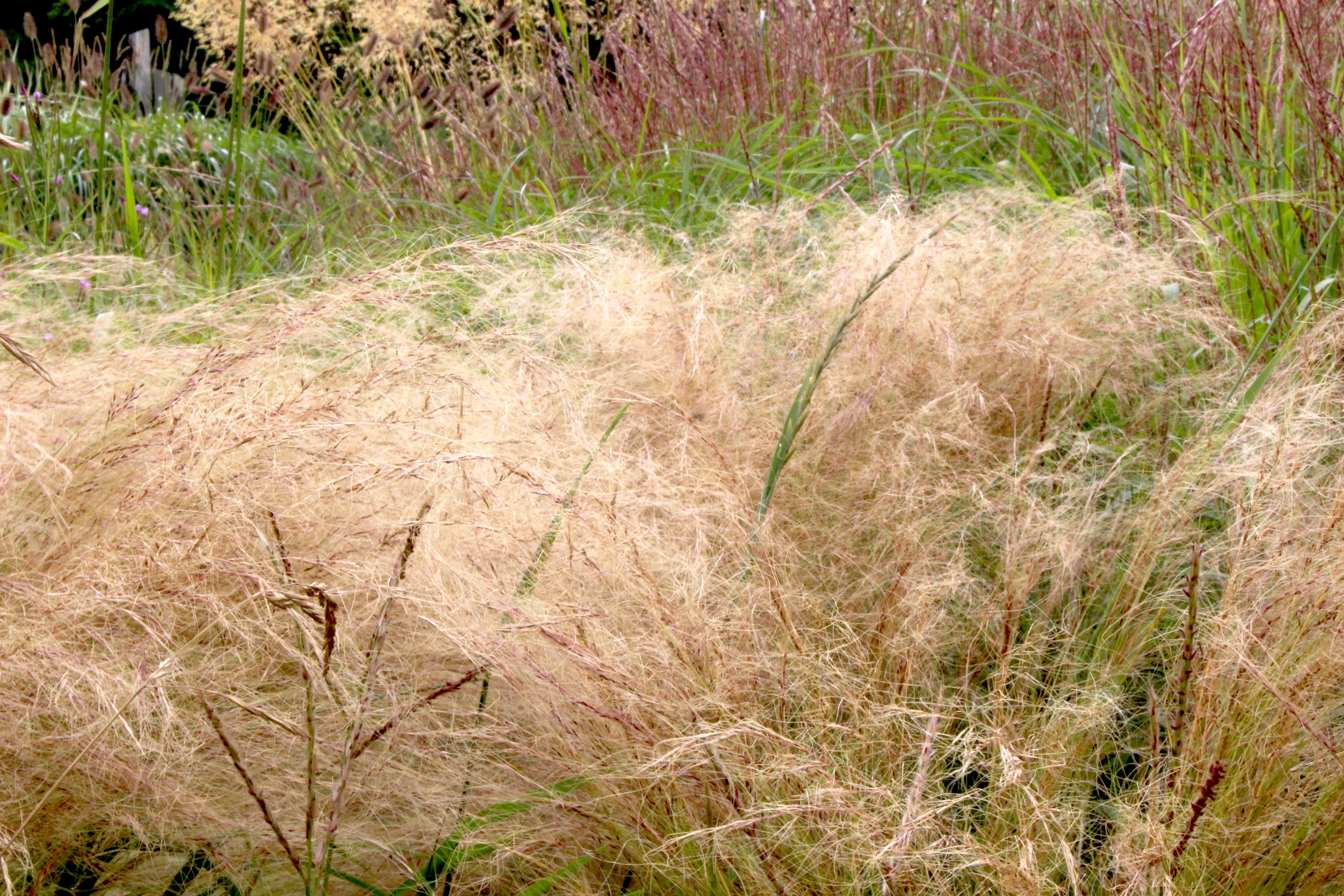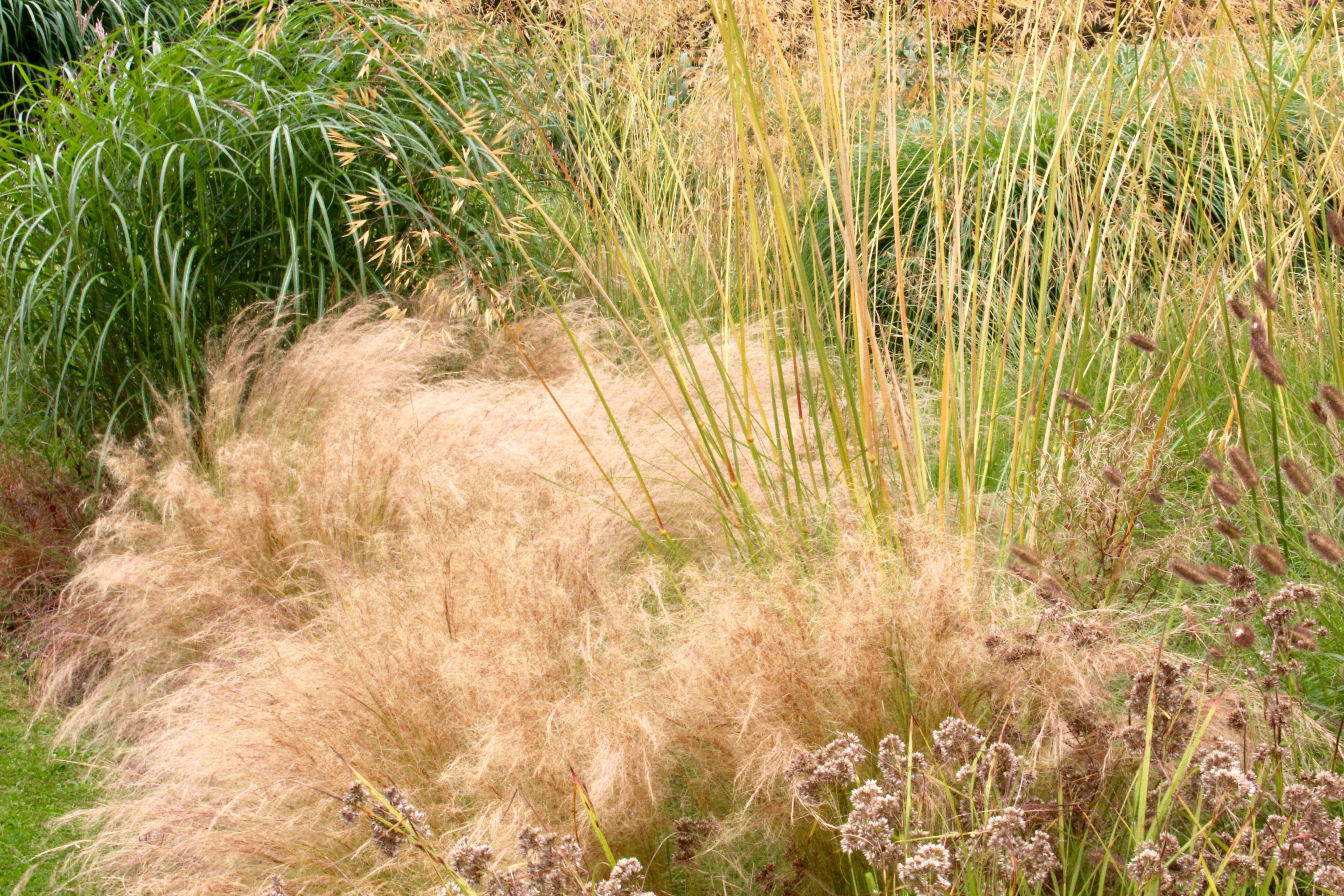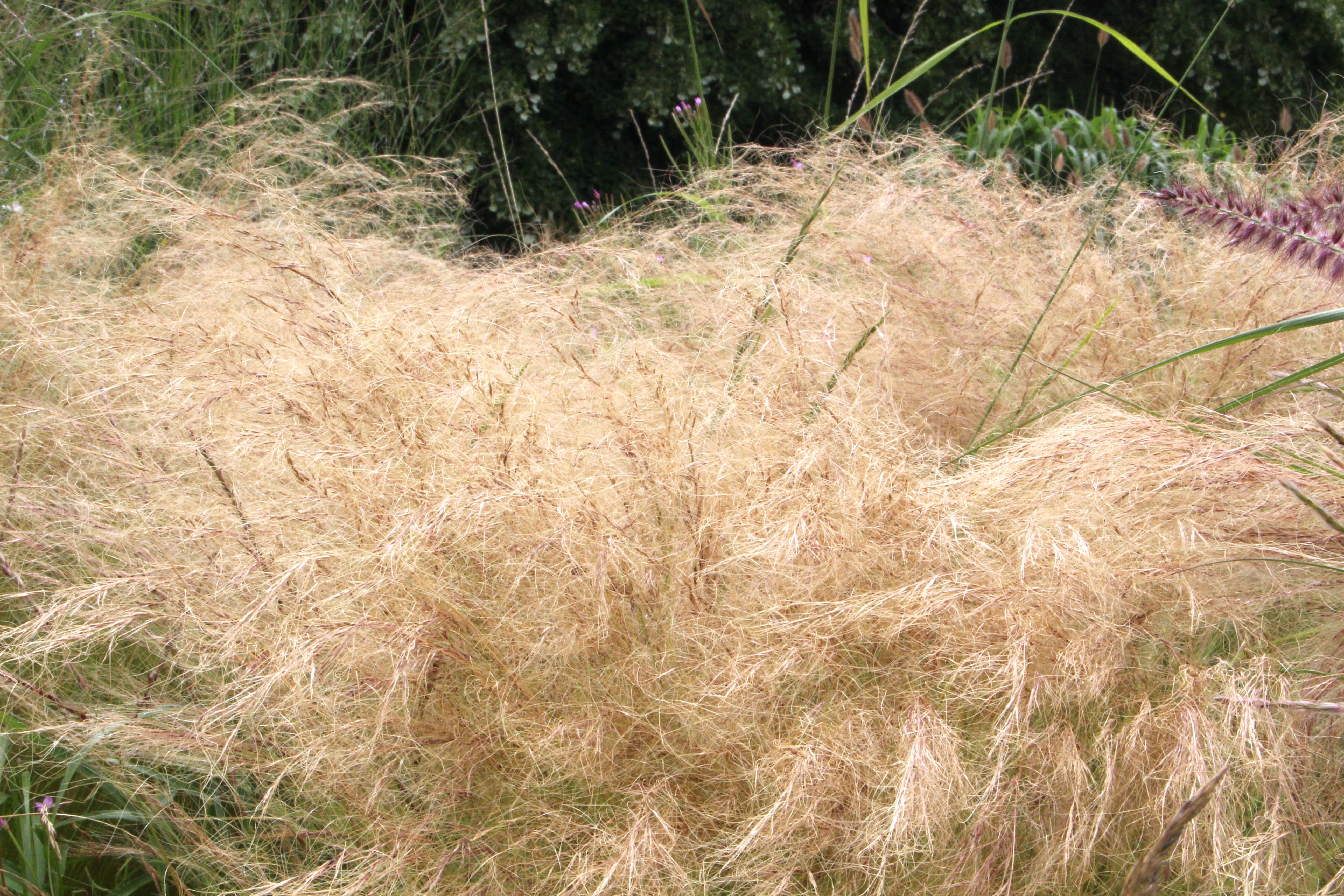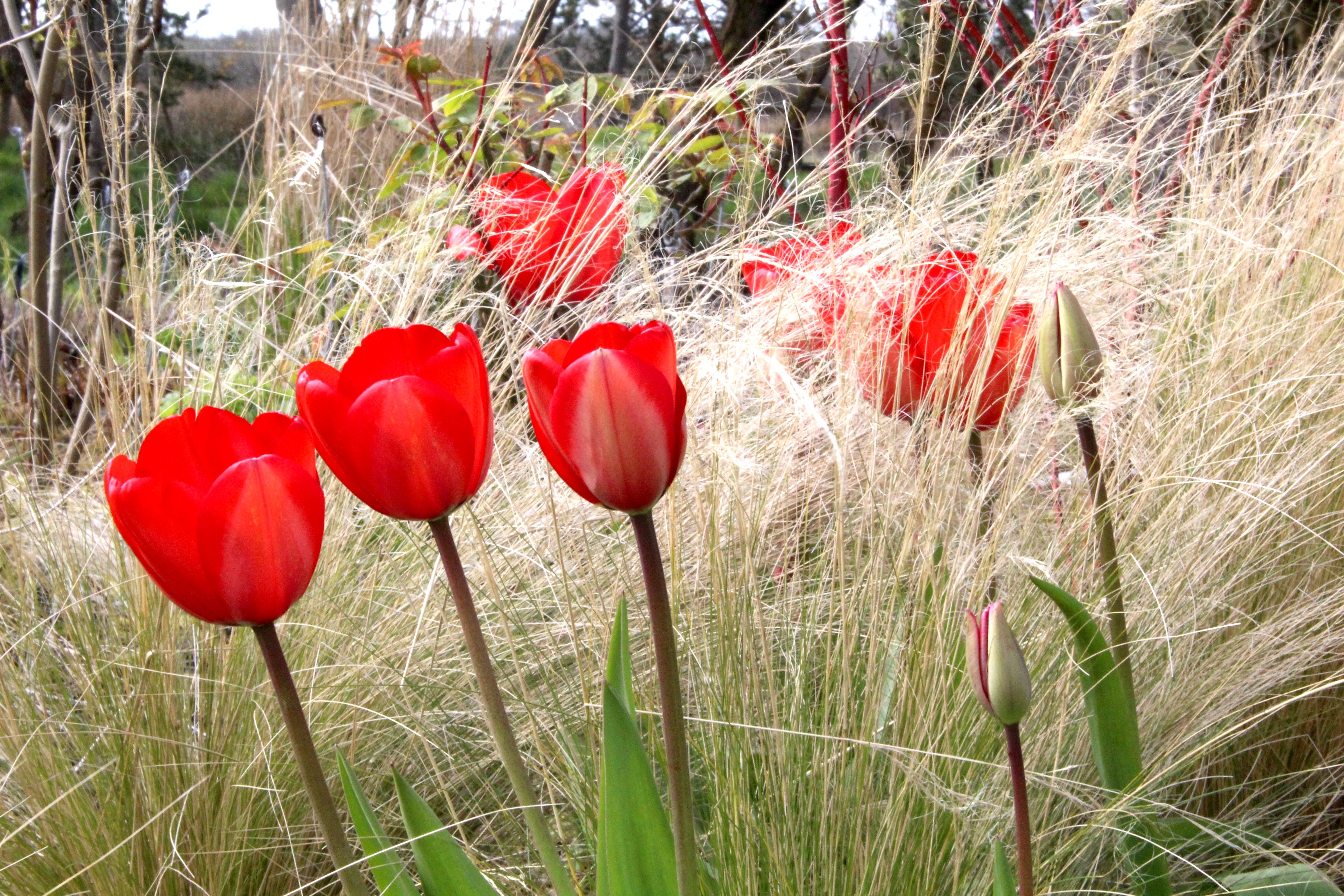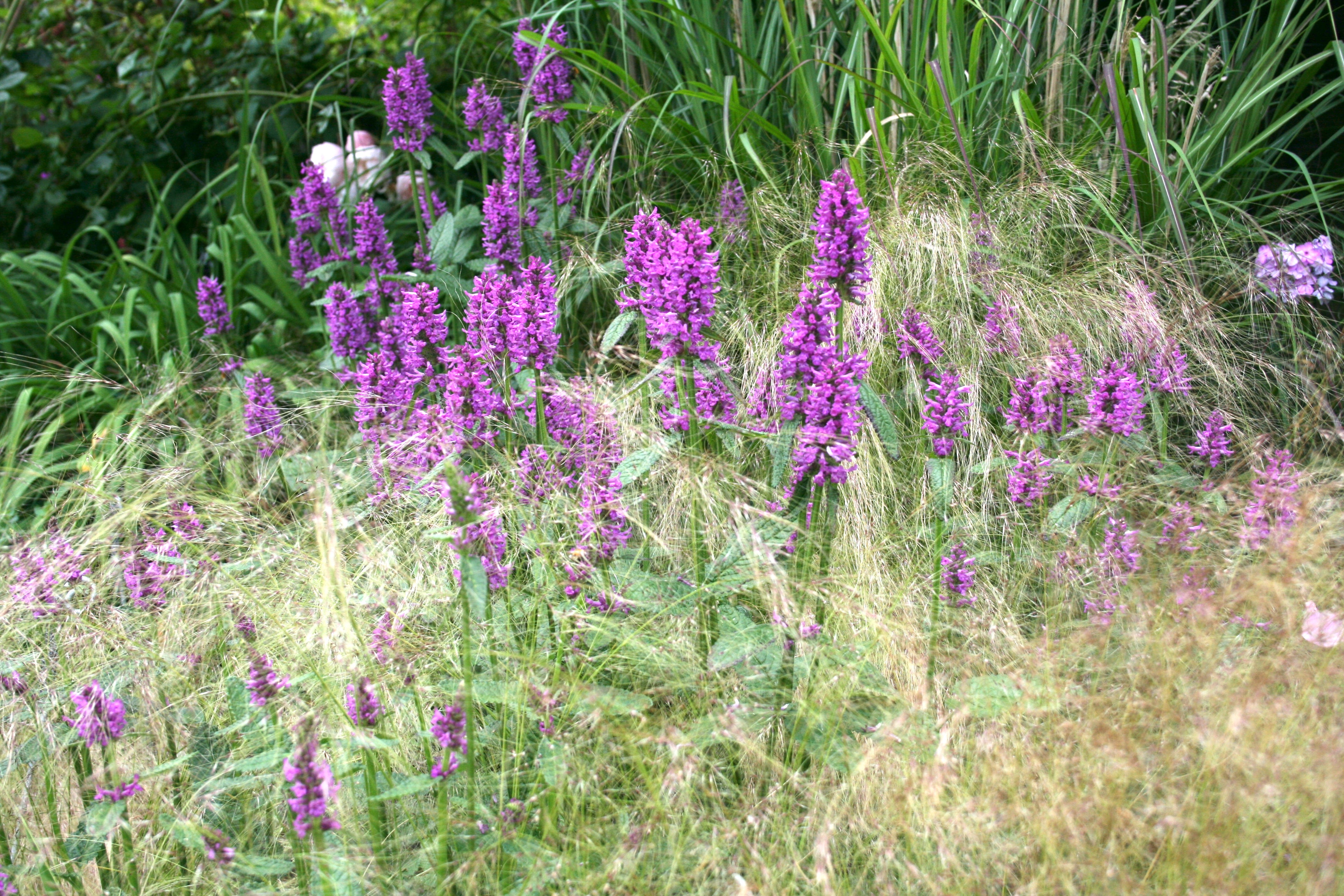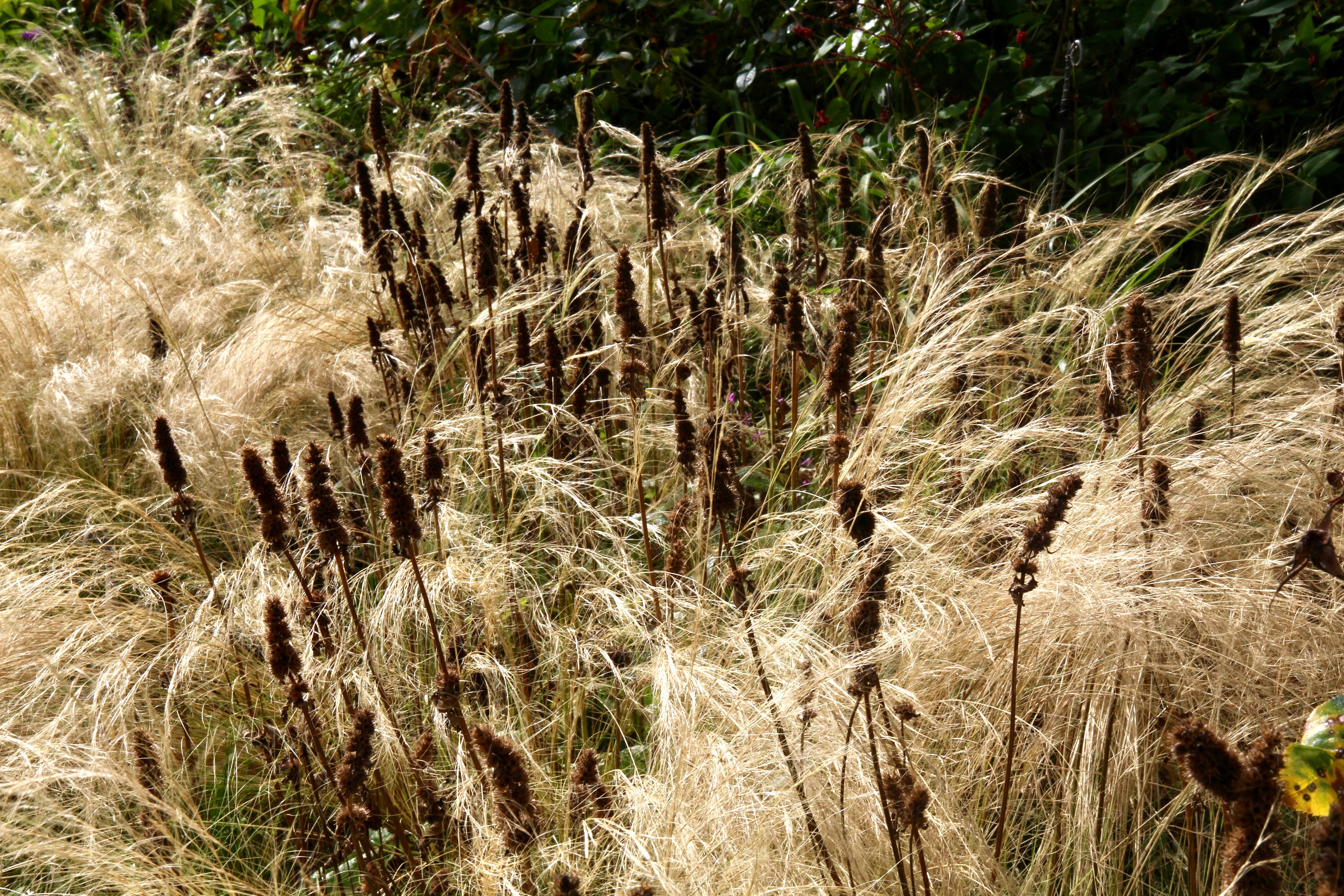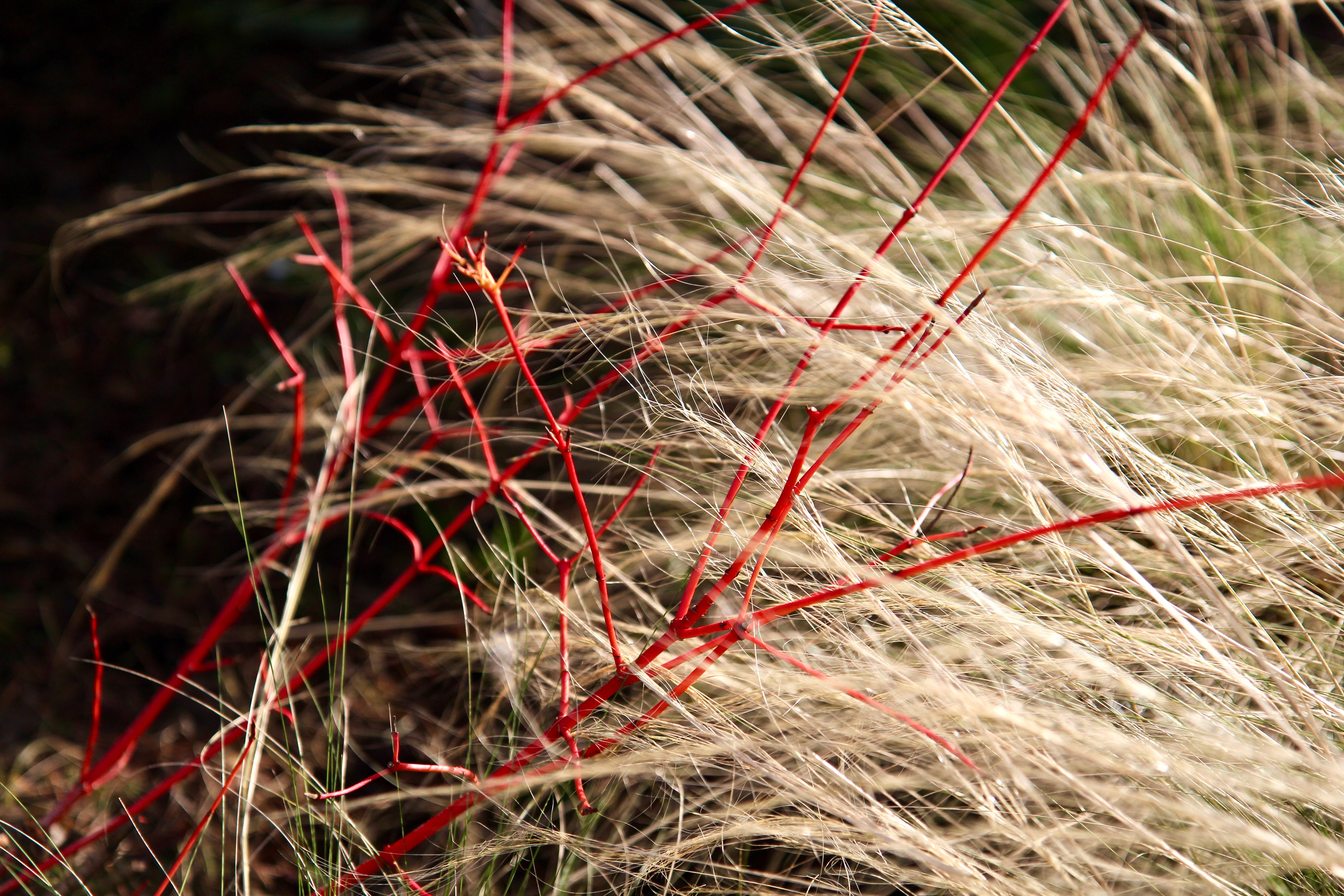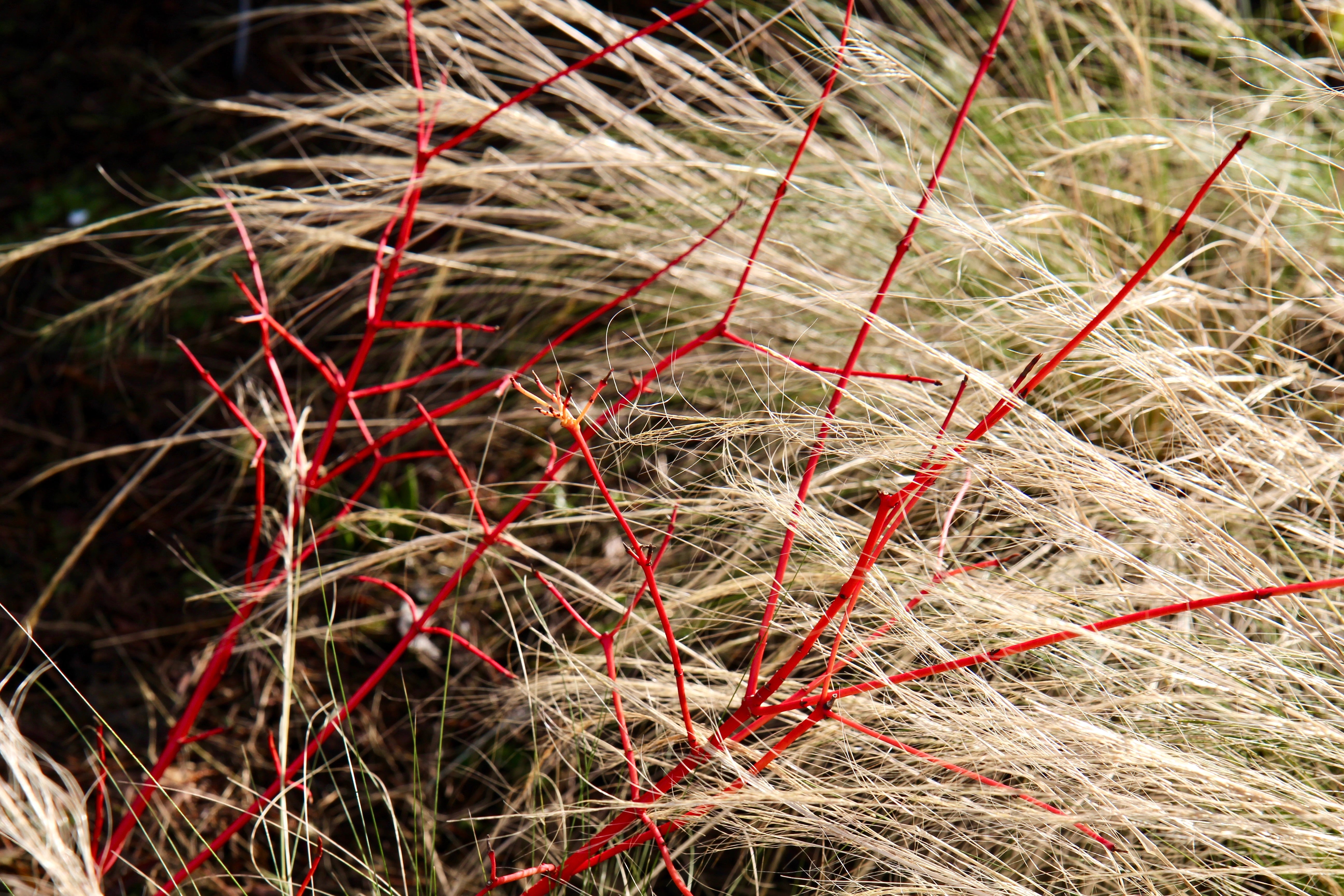Stipa tenuissima
Approx. 0.5 litre pot
About this cultivar:
Stipa tenuissima is, according to Val Bourne 'The glue that holds so many sun-baked borders together, emerging pale-green fine filaments turn bleached canvas beige and they continue to move in winter like a lava lamp'.
It provides wonderful, wispy, pale yellow-green leaves topped with fluffy plumes of silver-green flowers, maturing to blonde-buff. This versatile deciduous grass is perfect for introducing movement into a planting scheme since the fluffy flower heads and foliage billow in the slightest breeze.
Looks equally happy in any season or even situation. See the photos here with Stachys officinalis 'Hummelo' in Summer and in Autumn when the seed heads have turned black. Also see how it pairs with the bright winter stems of Cornus sanguinea 'Anny's Winter Orange'. Versatile!
You may read it doesn't like heavy soils, but we find it does well enough in our heavy, wet, clay when well established. It looks so good it is always worth a try. Although be sensible - don't try growing it in a pond....
- Position: Full sun, partial shade
- Soil: Almost any soil, grows well in Ballyrobert
- Flowers: April, May, June, July, August, September, October, November
- Other features: Grows well in Ballyrobert
- Hardiness: Fully hardy, grows well in Ballyrobert
- Habit: Clump forming, tufted
- Foliage: Semi evergreen
- Height: 30 - 60 cm (1 - 2 ft)
- Spread: 30 - 60 cm (1 - 2 ft)
- Time to full growth: 2 to 5 years
- Plant type: Herbaceous Perennial, Grass like
- Colour: Green, yellow
- Goes well with: -
About this genus:
Stipa (sty-pa) is a genus of around 300 large perennial hermaphroditic grasses collectively known as feather grass, needle grass, and spear grass. They are placed in the true grass family (Poaceae). It gets its name from the latin stuppa, meaning tow, in allusion to the silkiness of the flower spike.
Many species are important forage crops. Several species are used as ornamental plants. One species, esparto grass (Stipa tenacissima), is used for crafts and extensively in paper making.
Species of the genus Stipa can occur in grasslands or in savanna habitats. Certain specific prairie plant associations are dominated by grasses of the genus Stipa, which genus often lends its name to the terminology of some prairie types. In some areas of the western USA grasses of the genus Stipa form a significant part of the understory of Blue Oak savannas, and were even a more important element prehistorically before the invasion of many European grasses - the grass grown on sports fields and lawns in the USA is not native there!
Despite this prairie background many Stipa cultivars grow well on these islands - even in part-shade, wet areas. Try combining them with other praire style plants- Astrantia, Achillea etc. We also think they look great with Stachys and Roses.

